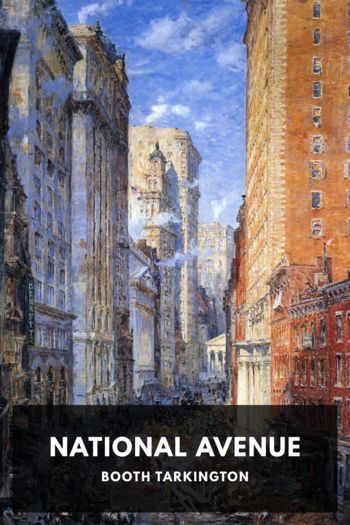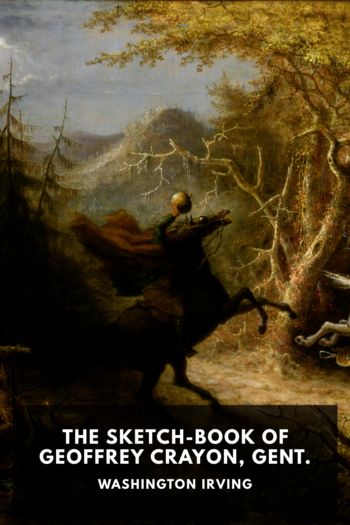Enchanted Evenings:The Broadway Musical from 'Show Boat' to Sondheim and Lloyd Webber by Block, Geoffrey (good story books to read .TXT) 📕

Read free book «Enchanted Evenings:The Broadway Musical from 'Show Boat' to Sondheim and Lloyd Webber by Block, Geoffrey (good story books to read .TXT) 📕» - read online or download for free at americanlibrarybooks.com
Read book online «Enchanted Evenings:The Broadway Musical from 'Show Boat' to Sondheim and Lloyd Webber by Block, Geoffrey (good story books to read .TXT) 📕». Author - Block, Geoffrey
72. The scene that contains “Tonight” is designated the Balcony Scene in the published vocal score (New York: G. Schirmer and Chappell, 1957 and 1959).
73. In his introductory survey of music, Joseph Kerman concludes his discussion of West Side Story by pointing out that “Bernstein’s fugue recalls the famous ‘Great Fugue’ by Ludwig van Beethoven” [the original final movement of the B Major String Quartet, op. 130]. Joseph Kerman, Listen, 2d brief ed. (New York: Worth, 1992), 393. According to Banfield, “the ‘Cool’ twelve-note fugue seems as indebted to Beethoven’s Grosse Fuge as does ‘Somewhere’s melodic contour to his ‘Emperor’ Concerto and its sparse counterpoint to his late quartet.” Banfield, Sondheim’s Broadway Musicals, 37.
74. In particular, the abrupt and explosive sforzando accent on the concluding third note of the first motive (a) and the strong accents on the first note of the third motive (c1 and c3) within a jazzy context depict a convincing premonition of the inevitable outcome facing the Jets and Sharks as well as Tony and Maria.
The remaining appearances of the first or “There’s a place” motive from “Somewhere” (a) maintains its primary association with the principal lovers. For example, the orchestral introduction to “One Hand, One Heart”—which also incorporates additional melodic liberties in its statement of the “place for us” motive (b)—again prepares the future fate of Tony and Maria and in the process links a song to West Side Story that had been withdrawn from Candide the previous year. The upwardly striving “There’s a place” motive acts as a musical symbol for a better place in another life for Tony and Maria. In a dramatically effective reprise, at the end of the “Nightmare,” the elided first and second “Somewhere” motives (“There’s a place” and “place for us”) return to the orchestra and Bernstein uses the second motive to support Tony’s singing of “half-way there” and “take you there.”
75. Like the “There’s a place” motive, the third “Somewhere” motive (Example 13.4c) appears ubiquitously in the “Cool” fugue. It is most conspicuous, however, in earlier portions of the Dream Sequence where an ascending half step—again as in Maria’s name—appears in the orchestral underpinning of Under Dialogue (13) and Ballet Sequence (13a). The third “Somewhere” motive will again figure prominently in the “Finale” (17) directly after Tony’s death as an inner melodic strand throughout the procession and in the three final statements that parallel the finale of the Dream Ballet as the last notes we hear. It also appears conspicuously but with less apparent dramatic justification throughout much of “America” (7).
76. Larry Stempel notes that the music of “I Have a Love” is a transformed version of Anita’s music in the preceding “A Boy Like That,” for example, on the words, “A boy who kills cannot love, / A boy who kills has no heart.” Stempel, “Broadway’s Mozartean Moment,” 50.
77. Among West Side Story chroniclers, only Banfield notes a possible Wagnerian reference when he writes that “one even senses a hint of Tristan in Tony’s supplication for ‘endless night.’” Banfield, Sondheim’s Broadway Musicals, 34. Peyser, in noting the influence of Wagner in Bernstein’s final opera, A Quiet Place (1983), concludes that Wagner was “an influence that had been nowhere apparent in Bernstein up to the late 1970s.” Peyser, Leonard Bernstein, 457.
78. Gottlieb, “The Music of Leonard Bernstein,” 26–32; Gradenwitz, Leonard Bernstein, 185–202; Stempel, “Broadway’s Mozartean Moment,” 39–56; and Swain, The Broadway Musical, 205–46. Gottlieb, a composer who acted as Bernstein’s musical assistant and general factotum at the New York Philharmonic from 1958–1966, wrote articulate jacket notes for Bernstein’s recordings and served as an editor of the composer’s writings, including the Omnibus television lectures of the 1950s. Gradenwitz, a German musicologist who remained a personal friend of the composer, also wrote notes for Bernstein recordings. For studies that appeared since the first edition of Enchanted Evenings see Gottlieb, Funny, It Doesn’t Sound Jewish on Bernstein’s use of the Shofar call (179–80) and Raymond Knapp, The American Musical and the Formation of National Identity for the plausible observation that the Maria or love transformation of the hate motive may be derived from the opening of the love theme from Tchaikovsky’s Overture to Romeo and Juliet (212).
79. In the underrated Wonderful Town (1953), perfect fifths also figure prominently in abbreviated thematic reminiscences that contribute to an “organic” musical unity, although these musical connections do not reinforce dramatic nuances as they will in West Side Story. Several melodies that emphasize perfect fifths reappear in other songs as well: the main tune of “A Little Bit in Love” serves as an introduction to “It’s Love” and the main tune of “It’s Love” forms the introduction to “A Quiet Girl.” A second type of connection is thematic reminiscence, as, for example, when the first measure of “Pass That Football”—most of the tune is musically and dramatically identical to “What a Waste”—returns in the first two measures of “A Quiet Girl.” A third unifying element derives from the reuse of the dotted boogie-woogie accompaniments originally associated with the sisters Ruth and Eileen in “Ohio,” Ruth in “One Hundred Easy Ways,” and Eileen in “A Little Bit in Love,” and distorted in Wreck’s “Pass That Football,” Ruth’s “Swing!,” and the sisters’ “Wrong Note Rag.”
80. The instrumental “Paris Waltz Scene” and its rhythmic transformation in the finale “Make Our Garden Grow” of Candide bears a strong resolution to the first “Somewhere” motive. In both, the upward leap of a minor seventh is followed by descending half step (minor second). In the Candide finale, as in “Somewhere,” Bernstein starts in E major and modulates to C (although Candide parts company with “Somewhere” with its intervening modulation to A major and in its avoidance of a return to E). The overlapping compositional histories of Candide and West Side Story produced additional





Comments (0)